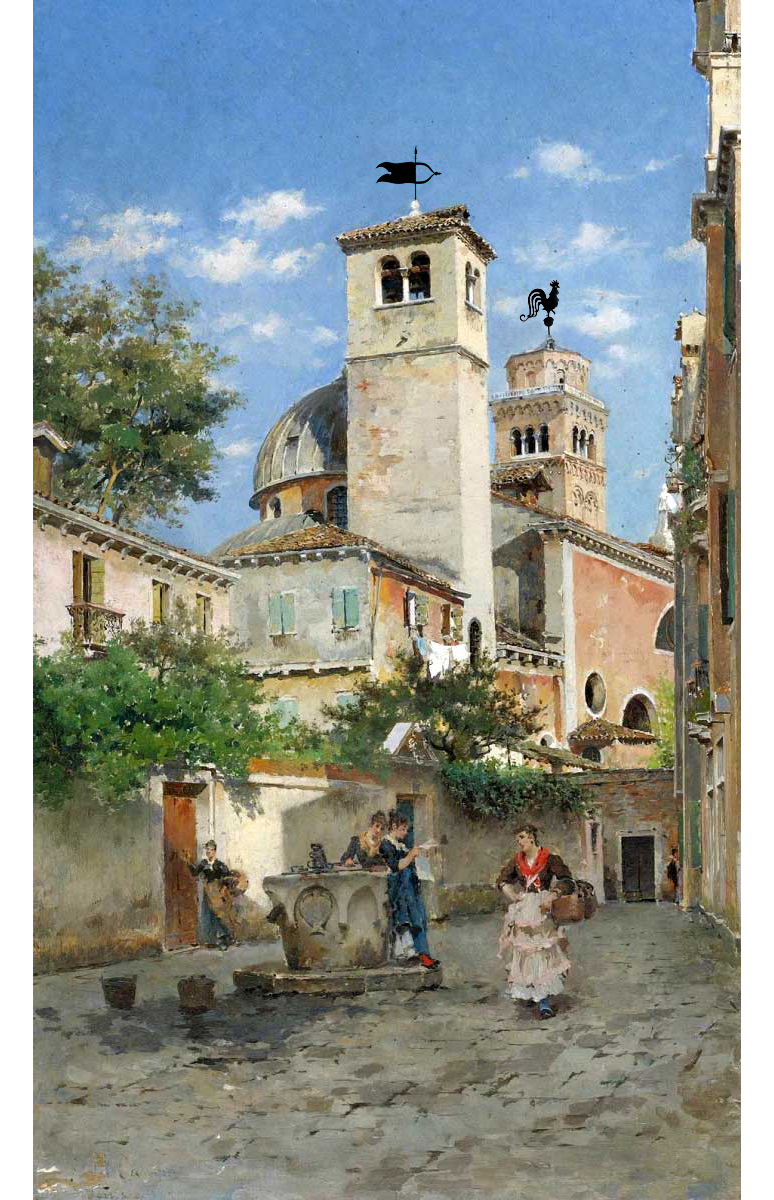Weather Vanes
More than 150 models of weather vanes of our production in iron. This is a category cconstantly evolving, we always try to insert new models inspired by the ancient times, or scientifically reproduced. We also reproduce custom wind-vanes on your personal design.
Pope Gregory I said that the cock (rooster) "was the most suitable emblem of Christianity", being "the emblem of St Peter", a reference to Luke 22:34 in which Jesus predcits that Peter will deny him three times before the rooster crows. As a result of this, the cock gradually began to be used as a weather vane on church steeples, and in the 9th century Pope Nicholas I ordered the figure to be placed on every church steeple.
One alternative theory about the origin of weathercocks on church steeples is that it was an emblem of the vigilance of the clergy calling the people to prayer. Another theory says that the cock was not a Christian symbol but an emblem of the sun derived from the Goths.
A few churches used weather vanes in the shape of the emblems of their patron saints. The City of London has two surviving examples. The weather vane of St Peter upon Cornhill is not in the shape of a rooster, but a key; while St Lawrence Jewry's weather vane is in the form of a gridiron.
Early weather vanes had very ornamental pointers, but modern wind vanes are usually simple arrows that dispense with the directionals because the instrument is connected to a remote reading station. An early example of this was installed in the Royal Navy's Admiralty building in London - the vane on the roof was mechanically linked to a large dial in the boardroom so senior officers were always aware of the wind direction when they met.
Federico del Campo, Meeting at the Well, Venice, 1881

